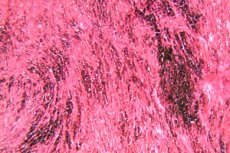Scientists have discovered how melanoma evades the human immune system
Last reviewed: 14.06.2024

All iLive content is medically reviewed or fact checked to ensure as much factual accuracy as possible.
We have strict sourcing guidelines and only link to reputable media sites, academic research institutions and, whenever possible, medically peer reviewed studies. Note that the numbers in parentheses ([1], [2], etc.) are clickable links to these studies.
If you feel that any of our content is inaccurate, out-of-date, or otherwise questionable, please select it and press Ctrl + Enter.

An international study led by Dr. Li Qi-Ching of the Agency for Science, Technology and Research (A*STAR) has identified the mechanism by which melanoma is the most aggressive a form of skin cancer that escapes the immune system.
Melanoma is notoriously difficult to treat in advanced stages. Despite some treatments that have improved outcomes, there is a category of melanomas that remain “cold,” meaning they do not respond to current therapies.
Research recently published in Nature Immunology demonstrates that human melanomas use nerve growth factor (NGF), a protein important for nerve development, to protect themselves from the body's immune reactions. This sheds light on how these resistant melanomas camouflage themselves from the immune system.
Decoding melanoma evasion tactics
A team of researchers, using advanced genetic engineering techniques, discovered that NGF and its receptor TrkA create a “cold” tumor environment by changing the behavior of both tumor cells and immune cells. In melanoma cells, NGF and TrkA reduce the production of signals that normally attract immune cells to the tumor site. In addition, they also inhibit the activation of immune cells, whose task is to destroy cancer cells.
This important discovery not only improves our understanding of how tumors evade the immune system, but also opens up new therapeutic strategies. “The prevalence of NGF-TrkA signaling in human melanomas provides a predictive marker of treatment response and overall patient outcome,” explained Dr. Lee, Distinguished Chief Scientist of the Institute of Molecular and Cellular Biology (IMCB) and the Singapore Immunology Network (SIgN) at A*STAR.

NGF creates an immune-isolated tumor microenvironment in melanoma. Source: Nature Immunology (2024). DOI: 10.1038/s41590-023-01723-7
The study was conducted in collaboration with a global network of researchers and institutions, including Duke University School of Medicine, Shanghai Institute of Nutrition and Health, Cancer Center and Research Institute. H. Lee Moffitt, School of Brain Sciences and Brain Medicine, Zhejiang University, and biotech companies TCRCure Biopharma and Hervor Therapeutics.
Discovering new ways to treat melanoma
The potential for improved cancer treatment from this research is significant. The study highlights the effectiveness of TrkA inhibitors, such as the FDA-approved larotrectinib, which blocks TrkA receptor activity. These inhibitors antagonize the immune-evasive actions of NGF and TrkA, thereby increasing the effectiveness of immunotherapies.
Currently, TrkA inhibitors such as larotrectinib are approved only for a small proportion of melanoma patients with certain TrkA mutations. However, new findings suggest that these inhibitors may have much broader applications. By repurposing TrkA inhibitors as immune system sensitizers that make cancer cells more vulnerable to the body's immune response, they could potentially benefit a broader group of melanoma patients, including those who do not have TrkA mutations.
“We are excited about the opportunity this opens to a broader range of patients who are resistant to immunotherapy,” said Dr. Lee.
"Preliminary analysis of melanoma samples from 104 patients at the cancer center
Moffita showed that 75% of patients had high levels of NGF expression, suggesting that this strategy could benefit the majority of those suffering from this aggressive cancer.
